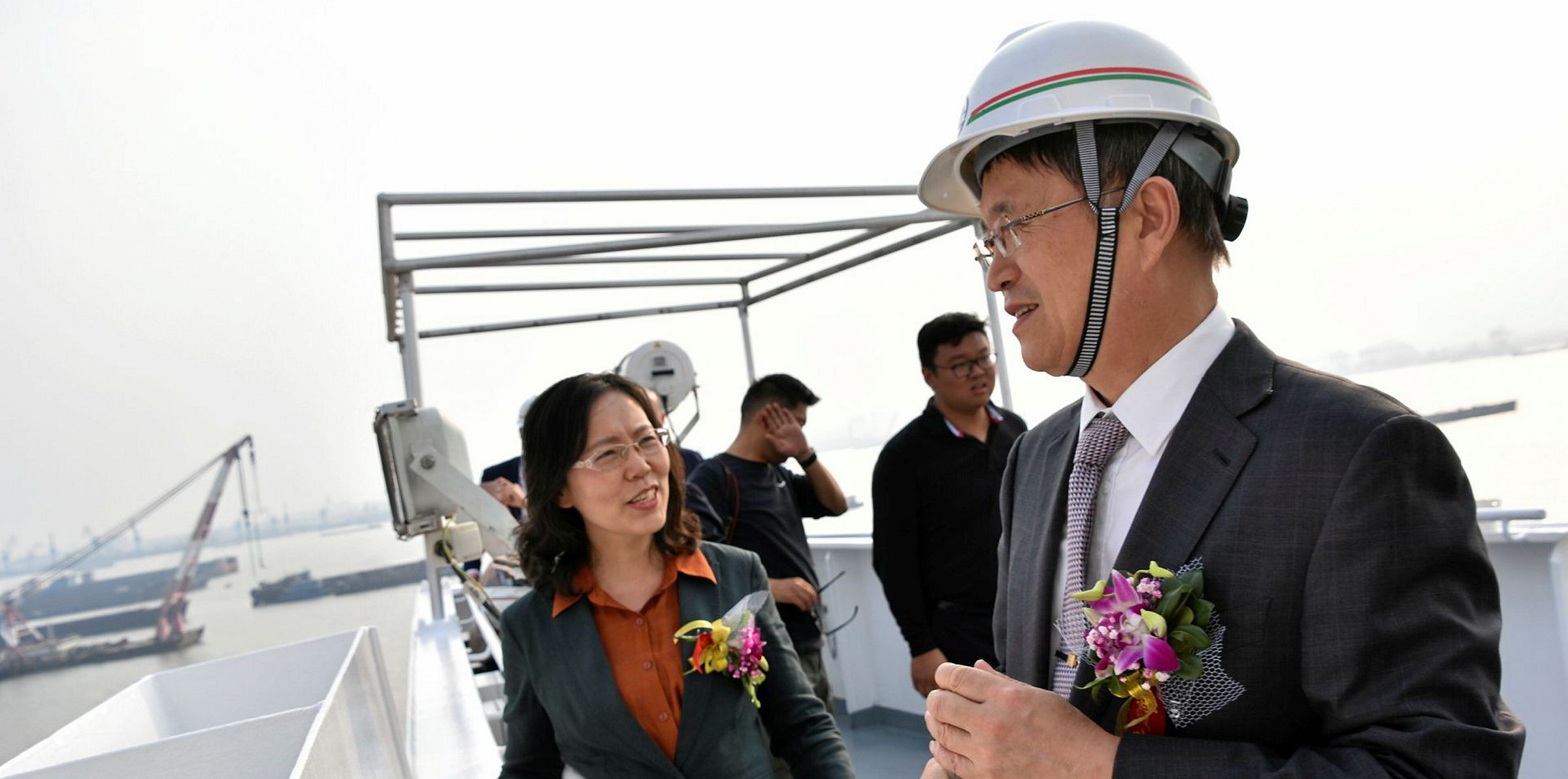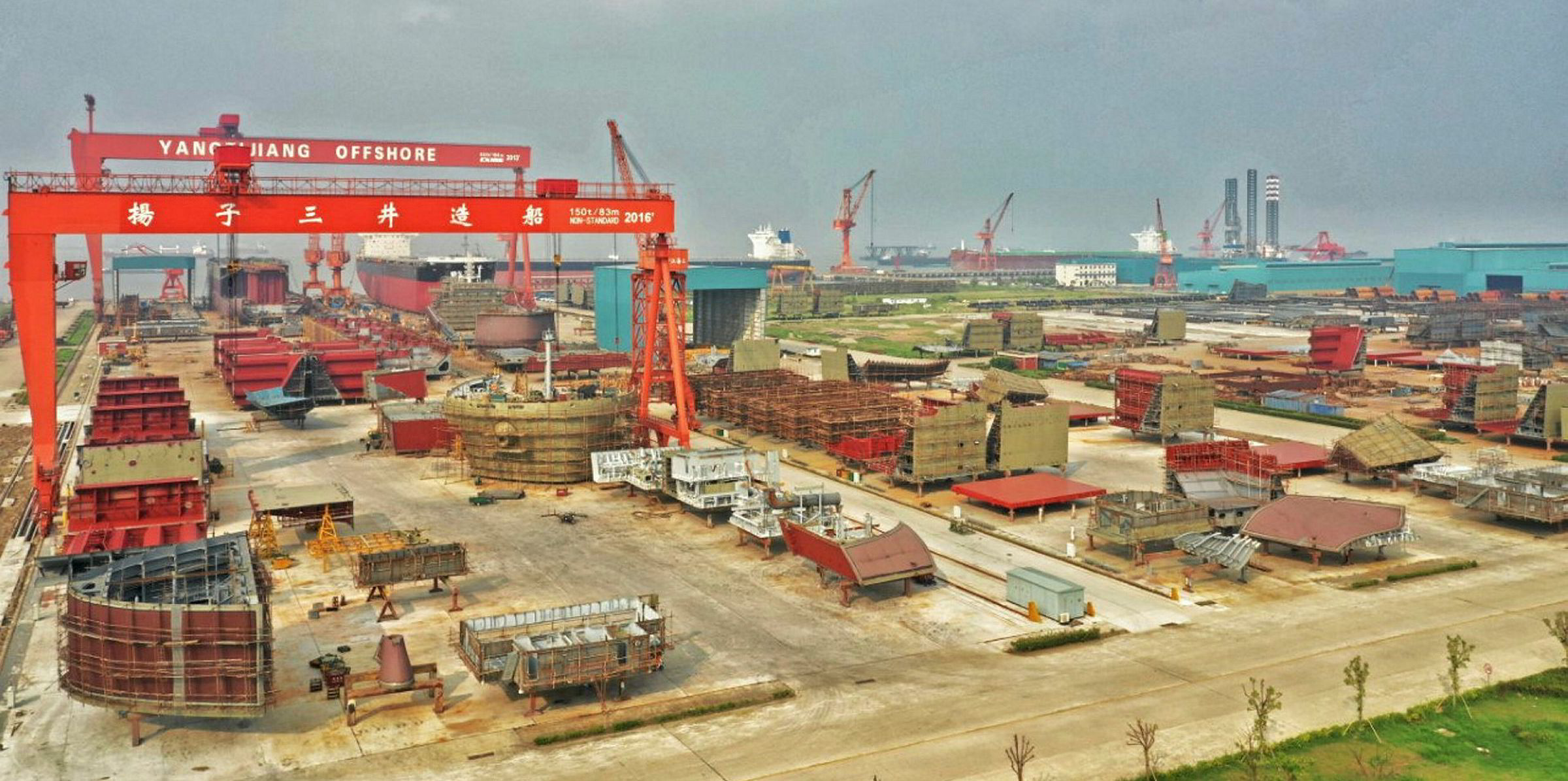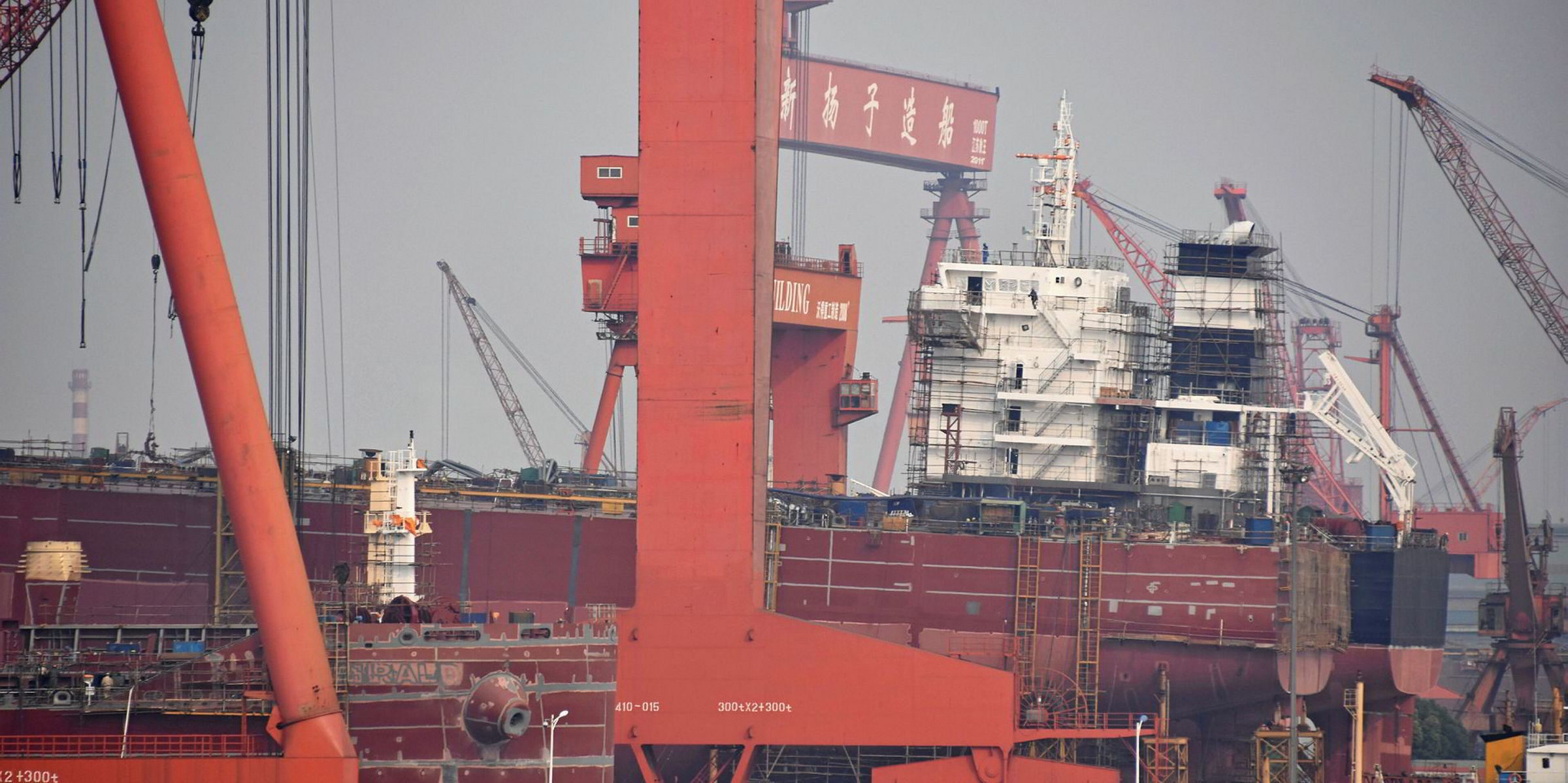China's Yangzijiang Shipbuilding has won new orders for five bulk carriers, including two guaibamaxes, from Asian shipowners.
The deals consist of three 82,000-dwt kamsarmaxes and two 325,000-dwt "guaibamax" bulkers, according to a release on Wednesday.
Yangzijiang revealed that its client for one of the kamsarmaxes is Kambara Kisen Co of Japan, but the other customers were not disclosed.
All three kamsarmaxes will be built at Yangzijiang’s Taicang yard, where Jiangsu Yangzi-Mitsui Shipbuilding Co is also based.
The customer for the two 325,000-dwt guaibamaxes is also from Asia, as TradeWinds has reported.
Ren Letian, Yangzijiang's chief executive, said the yard is seeing increased interest ahead of incoming IMO environmental regulations.
“As shipowners gradually firm up their plan on how to cope with the IMO 2020 emission rules, we saw a surge in enquiries for the building of new vessels," he said.
"We are also working on the negotiations of other potential orders.”
Including these orders, Yangzijiang said it has won contracts worth a combined $395m so far this quarter. The individual contract values were not disclosed.
PR push
The Singapore-listed shipyard has been working hard to reassure investors that it is business as usual, despite the departure of its executive chairman in August.
The Chinese shipyard confirmed last month that Ren Yuanlin has stepped away from the business to assist with a Communist Party of China investigation.
Since 8 August, the Chinese shipyard has seen a trading halt, a stock exchange query, share buybacks and a new chief executive, Ren Yuanlin's son Ren Letian.
Chief financial officer Liu Hua hosted an investor conference call in late August to reassure the local investment community, as TradeWinds reported.
In today's statement, Ren Letian said the new orders "proved customers’ deep trust in Yangzijiang’s strong management team, stable operations and solid track record".
The shipyard's share price fell by 30% between 1 and 16 August.
It closed in Singapore at SGF 0.94 ($0.68) on Wednesday, which is 32% lower than the level seen 30 days ago.








